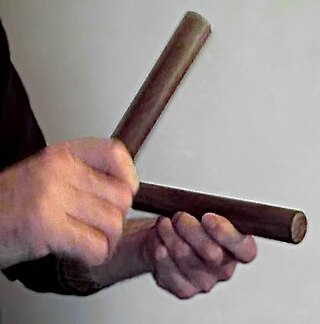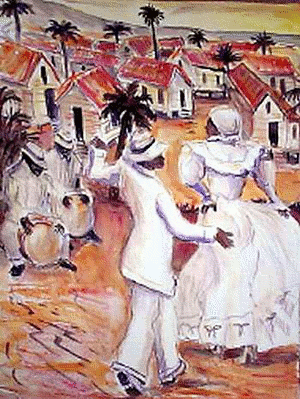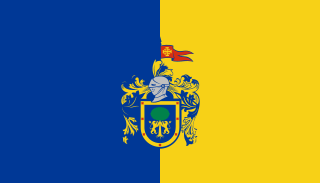
Guadalajara is a city in western Mexico and the capital of the state of Jalisco. According to the 2020 census, the city has a population of 1,385,629 people, making it the 8th most populous city in Mexico, while the Guadalajara metropolitan area has a population of 5,268,642 people, making it the third-largest metropolitan area in the country and the twenty-second largest metropolitan area in the Americas. Guadalajara has the second-highest population density in Mexico, with over 10,361 people per square kilometer. Within Mexico, Guadalajara is a center of business, arts and culture, technology and tourism; as well as the economic center of the Bajío region. It usually ranks among the 100 most productive and globally competitive cities in the world. It is home to numerous landmarks, including Guadalajara Cathedral, the Teatro Degollado, the Templo Expiatorio, the UNESCO World Heritage site Hospicio Cabañas, and the San Juan de Dios Market—the largest indoor market in Latin America.

Mexico's culture emerged from the culture of the Spanish Empire and the preexisting indigenous cultures of Mexico. Mexican culture is described as the 'child' of both western and native American civilizations. Other minor influences include those from other regions of Europe, Africa and also Asia.

The music of Mexico is highly diverse, featuring a wide range of musical genres and performance styles. It has been influenced by a variety of cultures, primarily deriving from Europeans, Indigenous, and Africans. Music became an expression of Mexican nationalism starting in the nineteenth century.

The clave is a rhythmic pattern used as a tool for temporal organization in Brazilian and Cuban music. In Spanish, clave literally means key, clef, code, or keystone. It is present in a variety of genres such as Abakuá music, rumba, conga, son, mambo, salsa, songo, timba and Afro-Cuban jazz. The five-stroke clave pattern represents the structural core of many Cuban rhythms. The study of rhythmic methodology, especially in the context of Afro-Cuban music, and how it influences the mood of a piece is known as clave theory.

Mariachi is an ensemble of musicians that typically play ranchera, the regional Mexican music dating back to at least the 18th century, evolving over time in the countryside of various regions of western Mexico. The usual mariachi group today consists of as many as eight violins, two trumpets and at least one guitar, including a high-pitched vihuela and an acoustic bass guitar called a guitarrón, and all players taking turns singing lead and doing backup vocals.

Bomba is an umbrella term that refers to a variety of musical styles and associated dances originating in Puerto Rico. It was developed by enslaved Africans and their descendants in sugar plantations along coastal towns, most notably Loiza, Mayagüez, Ponce, and San Juan, during the 17th century. It is the island's oldest musical tradition.

Jarabe Tapatío, often referred to as the Mexican hat dance, is the national dance of Mexico. It originated as a courtship dance in Guadalajara, Jalisco, during the 19th century, although its elements can be traced back to the Spanish zambra and jarabe gitano, which were popular during the times of the viceroyalty. Female dancers traditionally wear a china poblana outfit, while the male dancers dress as charros, and their steps are characterized by flirtatiously stepping around the brim of their partner's hat.

China poblana is considered the traditional style of dress of women in Mexico, although in reality it only belonged to some urban zones in the middle and southeast of the country, before its disappearance in the second half of the 19th century. Poblanas are women of Puebla.
Banda is a subgenre of regional Mexican music and type of ensemble in which wind and percussion instruments are performed.

Regional styles of Mexican music vary greatly from state to state. Norteño, banda, duranguense, Son mexicano and other Mexican country music genres are often known as regional Mexican music because each state produces different musical sounds and lyrics.

Baile folklórico, "folkloric dance" in Spanish, also known as ballet folklórico, is a collective term for traditional cultural dances that emphasize local folk culture with ballet characteristics – pointed toes, exaggerated movements, highly choreographed. Baile folklórico differs from danzas and regional bailes. Although it has some association from “danzas nationalists". Folk dances", that is, "dances that you will find in the villages, not on stage" were researched and disseminated by Alura Angeles de Flores. Each region in Mexico, the Southwestern United States and Central American countries is known for a handful of locally characteristic dances.

A palo or cante is the name given in flamenco for the different traditional musical forms.

San Juan de los Lagos is a city and municipality located in the northeast corner of the state of Jalisco, Mexico, in a region known as Los Altos. It is best known as the home of a small image of the Virgin Mary called Our Lady of San Juan de los Lagos. Miracles have been ascribed to her since 1632 and have made the Basilica of San Juan de los Lagos a major tourist attraction. The economy of the city is still heavily dependent on the flow of pilgrims to the shrine, which has amounted to between seven and nine million visitors per year.
Jesús González Rubio was a professor of music in Guadalajara, Mexico, who is best known for having composed the Jarabe Tapatío, also known in the United States as the "Mexican Hat Dance".

Jalisco, officially the Free and Sovereign State of Jalisco, is one of the 31 states which, along with Mexico City, comprise the 32 Federal Entities of Mexico. It is located in western Mexico and is bordered by six states, Nayarit, Zacatecas, Aguascalientes, Guanajuato, Michoacán, and Colima. Jalisco is divided into 125 municipalities, and its capital and largest city is Guadalajara.

Zacatecas, officially the Free and Sovereign State of Zacatecas, is one of the 31 states of Mexico. It is divided into 58 municipalities and its capital city is Zacatecas.

Huejúcar is a town and municipality, in Jalisco in central-western Mexico. The municipality covers an area of 309.2 km2.

Folk dance of Mexico, commonly known as baile folklorico or Mexican ballet folk dance, is a term used to collectively describe traditional Mexican folk dances. Ballet folklórico is not just one type of dance; it encompasses each region's traditional dance that has been influenced by their local folklore and has been entwined with ballet characteristics to be made into a theatrical production. Each dance represents a different region in Mexico illustrated through their different zapateado, footwork, having differing stomps or heel toe points, and choreography that imitates animals from their region such as horses, iguanas, and vultures.

Son mexicano is a style of Mexican folk music and dance that encompasses various regional genres, all of which are called son. The term son literally means "sound" in Spanish, and is also applied to other unrelated genres, most notably son cubano.
The 2022–23 Liga de Expansión MX season was the third professional season of the second-tier football division in Mexico. The season is divided into two championships—the Torneo Apertura and the Torneo Clausura—each in an identical format and each contested by the same eighteen teams. The Apertura tournament began on 24 June 2022. The Clausura tournament will began in January 2023.


















